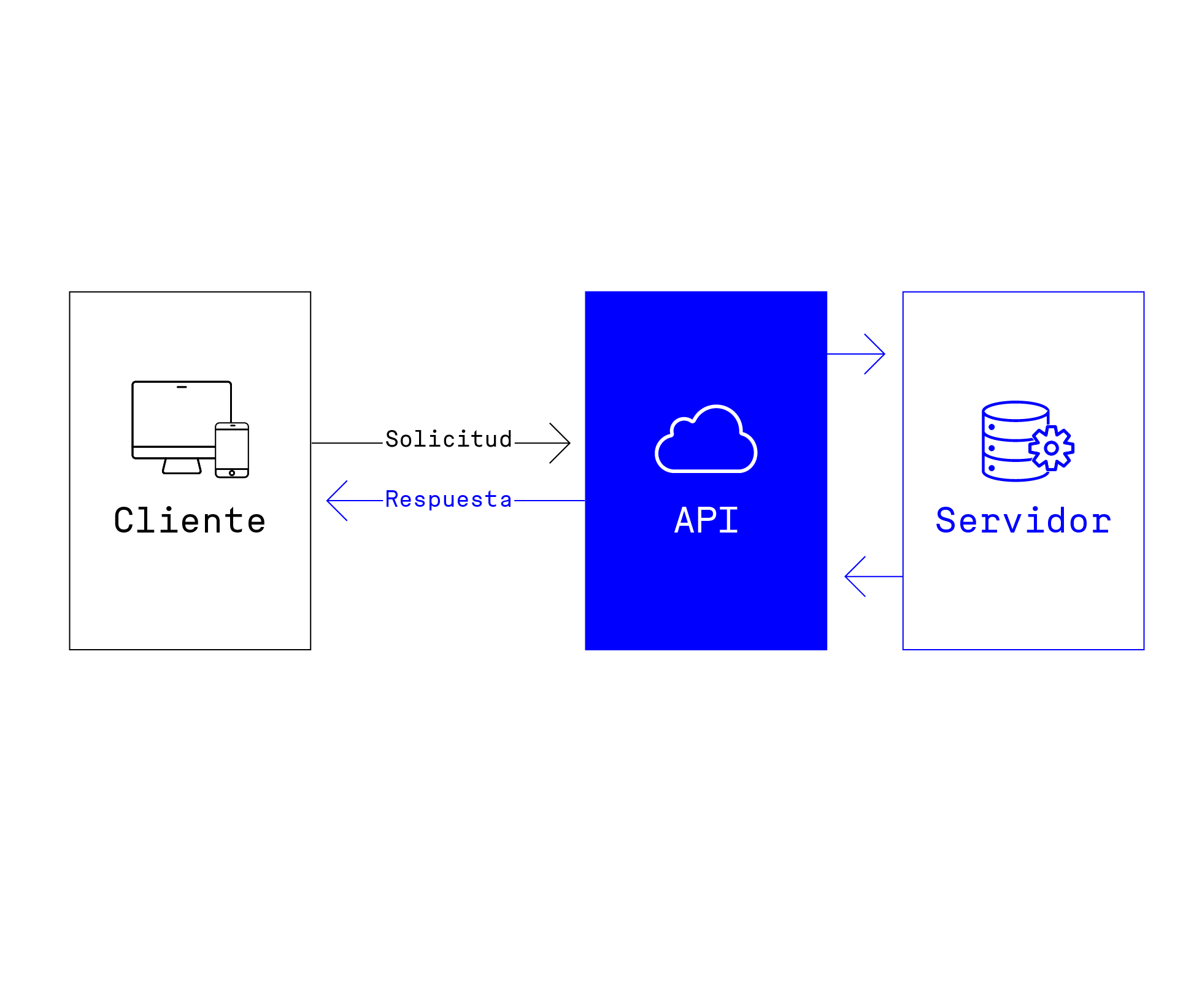
Application Programming Interface (API), is a vital tool that allows communication and interaction between different systems and software applications. Businesses and developers leverage APIs to integrate functionalities, share data, and expand the capabilities of their digital solutions without the need to rebuild them from scratch.
In the vast universe of software development, it's essential for different platforms, applications, and systems to "talk" to each other. Whether it's to extract data from a database, integrate a payment platform into an e-commerce application, or simply to incorporate third-party functionalities, an efficient and secure channel is needed for such communication.
Consider an example: an online store that wishes to offer its customers a variety of payment options, from credit cards to digital wallets and bank transfers. Instead of developing individual systems for each payment method, it could integrate various existing payment solutions through their respective APIs.
This is where APIs play a crucial role. They act as bridges between different systems, allowing information to flow and specific operations to be performed. The benefits are clear: agility in development, the possibility of constant innovation, and adaptability to the changing demands of the market.
With technological advancement, APIs not only simplify integration but also offer opportunities for monetization, security, and scalability. In today's dynamic digital ecosystem, APIs are not just technical tools: they are essential facilitators for the creation, evolution, and success of digital solutions.
What is an API?
API stands for Application Programming Interface. They are a set of functions and procedures that allow communication between applications or software programs so that they can share data between them.
APIs are fundamental to the operation of the Internet and the applications we use daily. Thanks to APIs, we can access services and content from different platforms, such as social networks, maps, music or news, without having to leave the application we are using.
Types of APIs
There are different types of APIs according to their scope, functionality, design, or security. Some of the most common are:
Public APIs: these are open to the public and can be used by any developer. For example, the Google Maps API allows integrating maps and geolocation into other applications.
Private APIs: these generally require authentication to access them. For example, a company may have a private API to manage its internal data.
Partner APIs: these are shared with specific partners or customers under certain agreements. For example, a company may offer a partner API to another company to facilitate the integration of their services.
REST APIs: these follow the REST (Representational State Transfer) architectural style, which is based on the use of resources identified by URLs and standard operations such as GET, POST, PUT or DELETE. For example, Twitter's API is a REST API that allows access to resources related to tweets, users, or hashtags.
SOAP APIs: these follow the SOAP (Simple Object Access Protocol) protocol, which is based on the use of XML messages and a web service to exchange information. For example, the Amazon Web Services API is a SOAP API that allows access to cloud computing services.
GraphQL APIs: these follow the GraphQL language, which is based on the use of queries and mutations to define the data you want to obtain or modify. For example, GitHub's API is a GraphQL API that allows access to data related to repositories, users, or organizations.
In addition, APIs can be local, which is when they run within the same environment, or remote, when they consume data from an application that is in another place or point.
Functions and benefits of APIs
APIs have many functions and benefits, both for developers and end users. Some of the main ones are:
Simplify the development and maintenance of applications: They allow reusing existing code and functionalities, which reduces the time and cost of development. In addition, they facilitate the updating and scalability of applications, since you only have to modify the API and not all the applications that use it.
Facilitate collaboration between teams: They allow separating the development of the frontend (the part visible to the user) from the backend (the logical and data part), which allows working in parallel and with greater autonomy. In addition, they promote communication between internal and external teams, as they provide clear and standardized documentation on how to use the API.
Offer opportunities for innovation: They allow combining and customizing services and content from different sources, which opens up a range of possibilities for creating new and original applications. In addition, they promote creativity and experimentation, as they allow testing different solutions with ease.
Monetize data: They allow sharing and monetizing own data with other users or platforms, which generates added value and new sources of income. In addition, they allow access to external data that can improve the quality and relevance of the services or content offered.
APIs can return information to you in different formats:
JSON (Javascript Object Notation): currently, it is the most used format for transferring information, it is easy to manipulate and understandable.
XML (Extensible Markup Language): this is the most traditional format for sending data, it is based on code.
Texto plano: this is the most traditional format for sending data, it is based on code.
And there are also HTTP request methods to interact with APIs, the most common are:
Get, request information.
Post, send new information.
Put, update information that already exist.
Delete, delete a resource.

Examples of APIs
There are thousands of APIs available on the Internet for different purposes and sectors. Some very commonly used cases are:
The Google Map API: it allows integrating maps and geolocation into other applications. For example, Uber uses this API to display the location and route of drivers and passengers.
Facebook API: It allows accessing the data and functionalities of the social network in other applications. For example, Spotify uses this API to allow users to share their favorite songs on Facebook.
Spotify API: It allows accessing the data and functionalities of the music streaming service in other applications. For example, Shazam uses this API to allow users to add the songs they recognize to their playlists on Spotify.
Elements a good API should have
Security, an API must be protected or the databases or its code could be stolen.
HATEOAS, is when the API self-describes, this means it should provide enough information to the client to be able to interact with the server.
Testing, check that everything works correctly.
Documentation, keeping a record of the process during execution.
Extra Fact
Did you know that when you request information through an API, the server responds with different codes? These are their meanings:
200s: successful process
300s: indicate redirection
400s: invalid request
500s: server errors
Developing and consuming APIs is important so that more applications can communicate and be much more complete, allowing you to take advantage of the development of other companies in other projects. Making your application able to connect with another one gives it more value!


